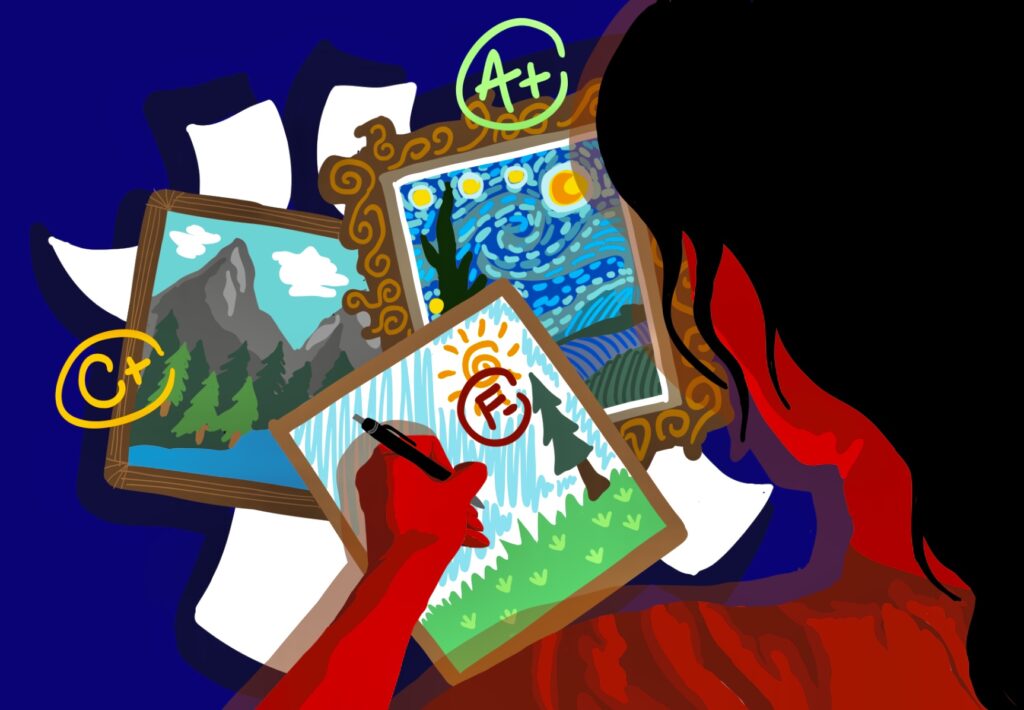Everyone has heard the phrase “art is subjective.” Because of its subjective nature, it is very difficult to decide whether art is “good” or not, as its beauty lies in the eye of the beholder. This creates challenges for art teachers at Berkeley High School, who must grade their students on their art all the time.
Unlike science and math, there are no right or wrong answers with art. To adapt, teachers such as Candiss Youngblood, a Studio Art and Creative Arts teacher at BHS, have come up with intricate ways of assessing students.
“I try to take a non-evaluative approach to grades. It’s a mindfulness technique, a meditation technique. Creation is beautiful, and we shouldn’t be quantifying what is good and what is bad,” she said. These tactics take a deeper look at the journey rather than checking whether or not they meet some set rule. Youngblood keeps the standards in mind while simultaneously seeing art as a learning process for everyone involved.
“I would say (grading is) primarily effort based. As a teacher I feel like it’s my job to be present… I’m a partner in their learning,” she explained.
This technique is highly effective, and fosters learning in the classroom as it allows students room to make mistakes. Youngblood has high expectations for her students in terms of effort, but acknowledges that, “Even if you try your very, very hardest, you are not going to learn how to shade a realistic portrait right away. That’s gonna take years and years and years of work and dedication,” she said.
Philip Halpern, who teaches Art of Video Production, agreed that past experiences play a large role in the success of a student, and they should not be graded down for this.
“Kids come to our classes with different prior knowledge, with different experiences, with different levels of confidence… I believe our job is to support and nurture and encourage kids on their journey as well as challenging them with high expectations,” he said.
The same idea should be applied to other subjects as well. It takes different people different amounts of time to understand math and science, just as it does art. The idea of effort and journey as a measure of student achievement rather than perfection should be more commonly used in other BHS subjects, because it is geared toward student success rather than student performance.
“We should be encouraging kids to put themselves out there, and to make themselves vulnerable, and do that by taking risks and putting out effort, trying, and taking the lead,” said Halpern. If one mistake can hamper a grade, there is no room for risks. As a result, learning can’t be a safe process.
According to Youngblood, at the end of the day, “A student’s education should be accessible to them. If you’re not providing students with a really clear path for their success, you’re actually doing them a disservice.”


